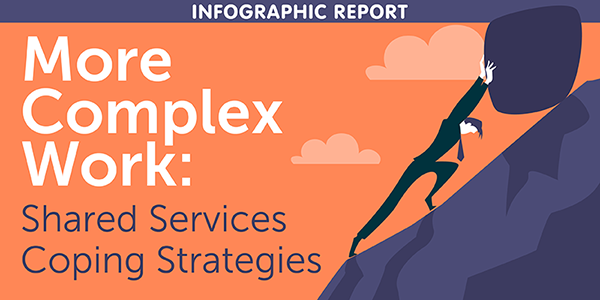Report: How Shared Services Are Coping with Growing Workloads and Complexity

sharedserviceslink, the world’s largest community for finance shared services professionals, released a comprehensive infographic report titled "More Complex Work: Shared Services Coping Strategies." The report highlights the challenges faced by shared services organizations adapting to new working structures and managing increasing workloads with greater complexity.
Our recent research survey finds that 76% of shared services have taken on more work in the last three years and 71% have taken on more complex work.
To understand how teams are navigating the increasing workload, sharedserviceslink and enate conducted a survey involving 100 senior finance professionals.
The report explores:
• The key ways in which work has changed for finance and shared services professionals in the last three years.
• Strategies to track, manage, and streamline fragmented processes.
• Coping mechanisms to stay on top of increasing workloads.
The report reveals that many shared services continue to rely on manual practices to oversee tasks, processes, and projects. However, as shared services teams grow in size, scope, and complexity, these manual methods become increasingly untenable.
Key statistics from the report show that despite expansion, most respondents use a combination of spreadsheets (64%) and emailed or verbal reports (54%) to manage workstreams. Furthermore, the majority of respondents lack workflow tools to manage processes, projects, and tasks.
The report explores how process orchestration allows businesses to design and manage end-to-end processes, allocate tasks to the right resources, and ensure timely completion of work. By implementing process orchestration, shared services organizations can increase team capacity, enhance visibility, improve customer satisfaction, engage their teams more effectively, and adopt user-friendly, future-proof interfaces.
